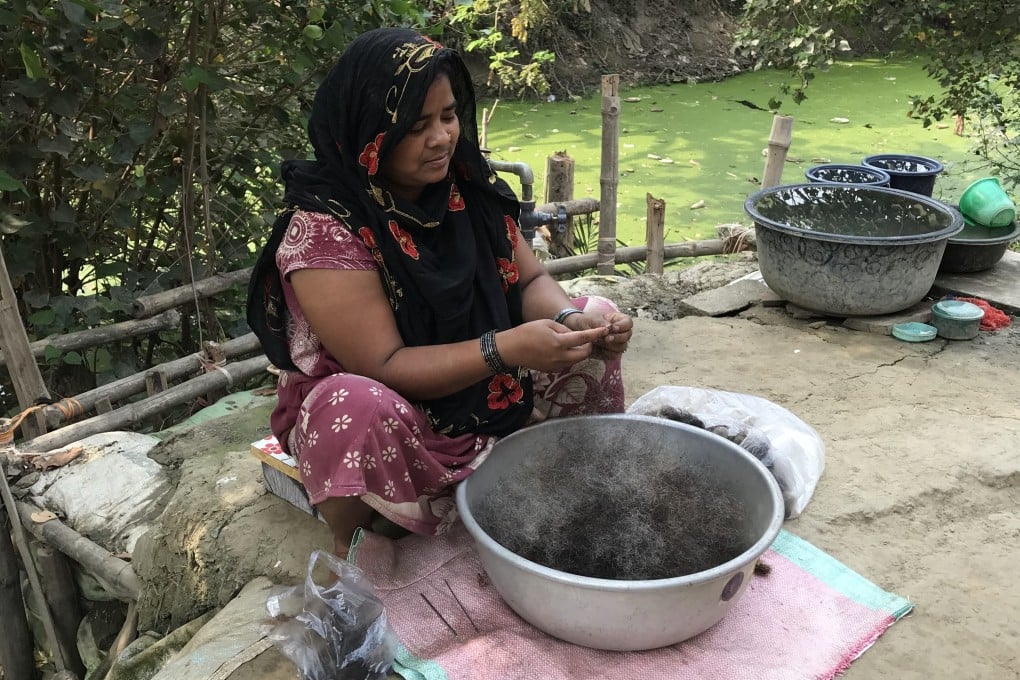India’s human-hair trade at risk as ‘rampant smuggling’ to China via Bangladesh, Myanmar cuts into profits
- Renowned for its wigs and hair extensions, India is the world’s largest exporter of human hair, followed by Indonesia and China
- But processing jobs have been drying up in the South Asian nation, as China-linked smugglers run rampant – giving border forces an extra headache

For five hours a day, Hasina Bibi painstakingly untangles cast-off human hair, sorting it into strands and making “balls” with the pieces longer than six inches (15cm), throwing the rest into a bin. For untangling about 25kg of hair per month, she earns 7,500 rupees (US$92).
Many impoverished women like Bibi in the eastern state, which accounts for almost half of India’s human hair exports, earn money as unskilled labourers in the nation’s human-hair industry, which is worth roughly US$1 billion according to the Human Hair and Hair Products Manufacturers and Exporters’ Association of India.
Hair traders collect hair balls – popularly known as goli or chutti – from sorters like Bibi, then have them semi-processed at small workshops. The hair in the balls can range from four to 40 inches (10cm-101cm) in length and semi-processing them involves washing, splitting and arranging them by size before straightening them using strands of the same length and thickness from root to tip.

These double-drawn extensions are then legally exported to other countries – China, the US and countries in Europe are the largest buyers of Indian hair – which use them to make wigs and other hair products for the local and international markets.
In the past, Chinese firms would buy hair directly from Indian businesses for around US$200 per kilogram and use it to make wigs, extensions, eyelashes, paint brushes, and fake beards and moustaches for the global market.
